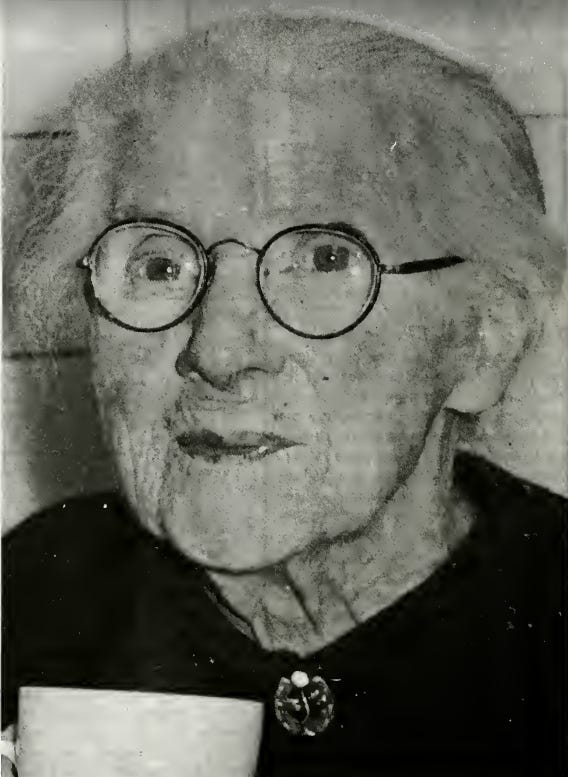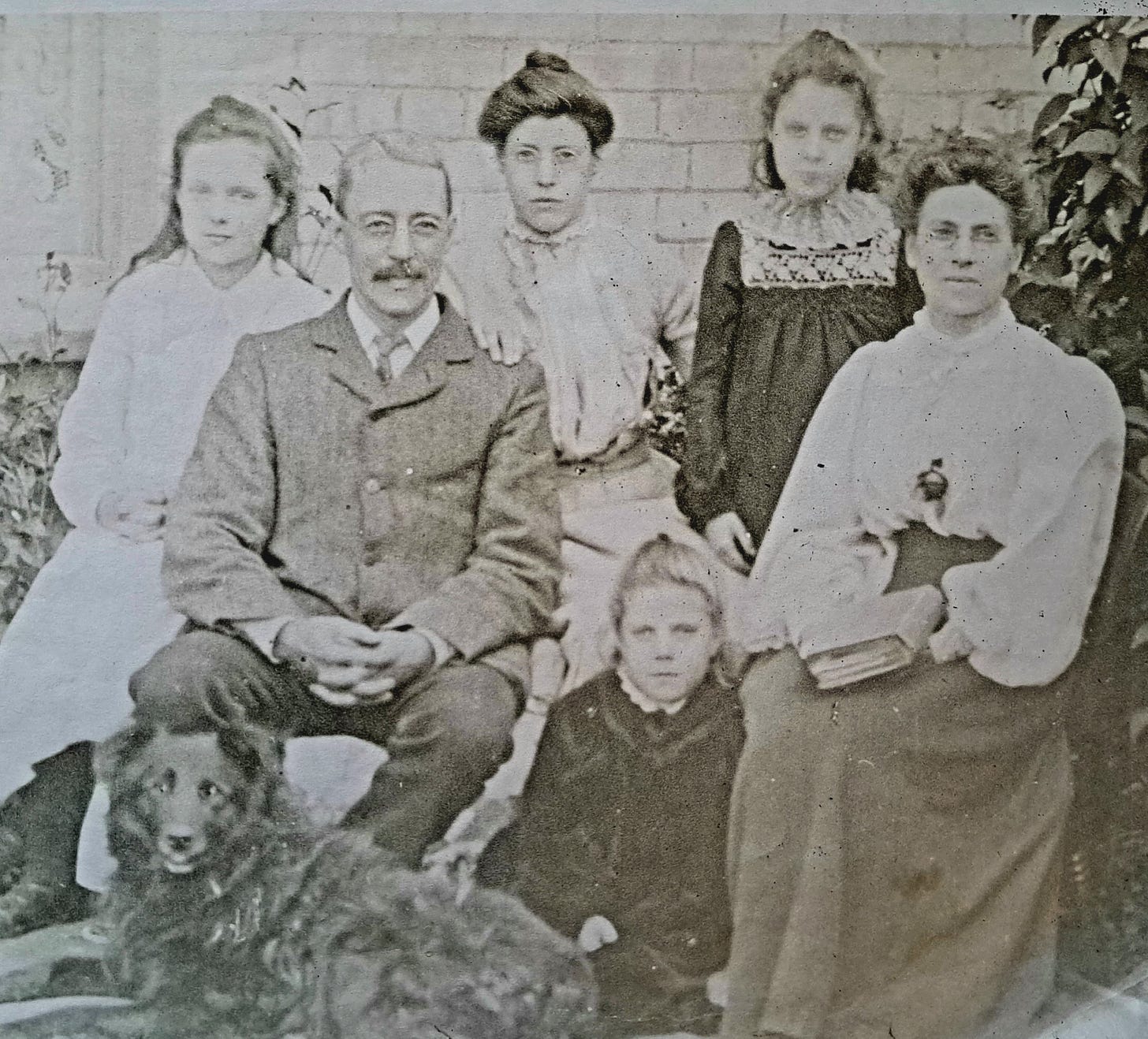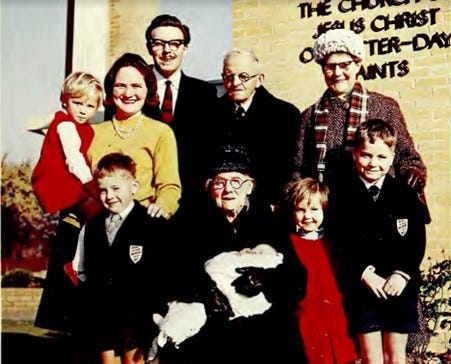Abigail Cox
Cutting apple trees at ninety years old
The city of Cambridge, England, was re-opened to missionary work by The Church of Jesus Christ of Latter-day Saints in 1905 by Elder Hugh B. Brown, a young Canadian missionary who would one day become an Apostle and member of The First Presidency. Success appears to have been immediate and in August 1905 he and his companion reported the following:
We believe that during the few years in which there have been no Elders in Cambridge the people have had time to prepare their minds, and ripen for the harvest, and although some are blind with prejudice, there are many who are anxiously investigating the truth. We have many honest-hearted friends here, four of whom have very kindly offered their homes for us to hold meetings in, which we gladly accepted. We believe good results will follow, as immedeately after our second meeting we had three applications for baptism.1
Later that year, on 7 December 1905, a branch was formally organised in the city along with a Sunday School. Baptisms continued and a growing congregation began to take shape.2
Baptisms
John and Abigail Cox were two of the converts who joined The Church of Jesus Christ of Latter-day Saints in Cambridge. They also chose to remain in the British Isles where they faithfully served others for decades. The husband and wife were in their fifties when they were baptised. Along with several of their children they were baptised in Cambridge in September 1906. John and some of their sons were baptised on the 19th and then on the 28th Abigail and some of their daughters followed suit.3
Almost immediately the Cox family sought ways to be of assistance to the missionaries and more generally to the building up of the Church in their area. In 1909 and 1910, baptisms were held at their home in Brookside, Cambridge. John erected a baptismal font and at least four people were baptised in it.4 They also opened their home to the Church and a Sunday School met there for a number of years.5
A move to Hertfordshire
In 1912, John and Abigail moved their family to Hitchin, Hertfordshire, where she had been born. They were further away from a branch of the Church, but they remained faithful in their testimonies and enjoyed periodic visits from missionaries and others. In September 1918 President James Gunn McKay, head of the Church in their area, visited the Saints around Hertfordshire and remarked that:
Elder James H. Ludlow and myself had a very pleasant trip, visiting the saints at Cambridge, Croydon, and Tadlow, Cambs., at Wrestlingworth, Beds., and at Hitchin, Herts. We found one of the saints who has not been in touch with the Church for years, but was delighted to see us, and entertained us over night and subscribed for the Star. We thoroughly enjoyed one trip. For one thing, we had the pleasant experience of picking blackberries by the wayside. The weather was fine, and it was like a holiday to us. These periodical visits seem to do the saints a great deal of good, and they seem to appreciate them more than we can estimate. Often they feel as if they were alone in the world, and when elders call, they receive new hope and joy.6
Despite being distant from a branch the family organised a small Sunday School and Primary. Eventually, a branch was formed that operated in Hitchin for a time. At another time she belonged to the Luton branch.
When John Cox died in 1929 Abigail had just turned seventy years old. Several of their eight children had died and others had emigrated, but several remained in the British Isles. Her daughter, Cissie, and her husband Fred were also faithful Latter-day Saints who lived nearby. Cissie held multiple callings for years and Fred was a branch president for over twenty years. Together they kept an eye on Abigail although she more than ably handled herself for decades. Despite her husband’s death and other challenges that came her way Abigail stayed firm in her faith and maintained her testimony. As she noted: “My testimony grew and became stronger because I was nearer to the Lord.”
Chopping Apple Trees
In 1949 she turned ninety years old. She still attended meetings regularly and helped with various projects, including quilting. In the summer of that year, Abigail was still busy with physical work. Whether it was chopping and sawing wood or digging in the garden, she kept herself active. That summer she chopped two apple trees into logs and stacked them to dry out for use as firewood. In addition, she sewed, made rugs, and as one contemporary noted “does fine fancy work.” She was in excellent physical health and retained a vigorous mind.7
Abigail ascribed her condition and resolute testimony to obedience to the commandments of God. Whether it was paying tithing or keeping the Word of Wisdom she was faithful to the gospel of Jesus Christ that she had adopted.
As one contemporary noted:
Sister Cox is a joy and a pleasure to meet. She still has that firm handshake and strong conviction that comes from her long association with the Church. Alert both physically and mentally, she is a true morale-builder . . . one who leaves you with the feeling that life is truly worthwhile and good.8
Making Temple Covenants
In September 1958, the London England Temple was dedicated. Abigail was keen to enter the temple and make covenants which she did later that month at the age of ninety-nine. Despite having lived through two world wars, economic depressions, personal challenges, and more, she retained her faith in God and in Jesus Christ as the Son of God. Attending the temple was a revelatory experience for her. Of the experience she remarked:
As I sat in the Temple, so many things became clear to me. It appeared to me as though my entire life had been a period of preparation which was to culminate in this glorious moment.
After fifty-three years of waiting, she was able to enter the temple where she performed various ordinances for herself and she was sealed to John, thirty years after his passing.
On 2 November 1959 Abigail celebrated her hundredth birthday. A photographer from the Luton News visited her home to take a photograph and she received a letter from Queen Elizabeth II. There were now multiple congregations near her home and Saints from St Albans, Stevenage, and Luton sent her congratulations on reaching the milestone.9 One of the presents she received was a copy of her birth certificate from the local registrar. She had never bothered to get one before, she jokingly told a reporter.10
Death and Legacy
Abigail died on 13 April 1966 and, according to her beliefs, was reunited with her beloved John who had preceded her more than 35 years earlier. She left a powerful legacy to her family and others. She kept herself busy, helped others, maintained a vibrant testimony, and remained close to her loved ones.
‘Encouraging Words from Cambridge,’ The Latter-day Saints’ Millennial Star, Vol. 67, No. 12 (1905), p. 186.
‘From the Mission Field,’ The Latter-day Saints’ Millennial Star, Vol. 68, No. 1 (1906), p. 11.
Pamela Johnson, ‘Eternal Youth,’ Millennial Star, Vol. 121, No. 12 (1959), p. 506.
‘From the Mission Field,’ The Latter-day Saints’ Millennial Star, Vol. 72, No. 46 (1910), p. 735; and ‘From the Mission Field,’ The Latter-day Saints’ Millennial Star, Vol. 71, No. 14 (1909), p. 222.
See Cambridge Branch Manuscript History, LR 1328 2, bx. 1, fd. 1, CHL.
‘A Pleasant Trip,’ The Latter-day Saints’ Millennial Star, Vol. 80, No. 40 (1918), pp. 638-639.
Paul Barratt, ‘She Chops the Apple Tree at 90 Years Young,’ The Latter-day Saints’ Millennial Star, Vol. 111, No. 10 (1949), pp. 311, 333-334.
Ibid.
‘New Era Calendar,’ Millennial Star, Vol. 122, No. 2 (1960), p. 85.
‘Now she’s sure,’ Daily Herald, 3 November 1959, p. 5.




